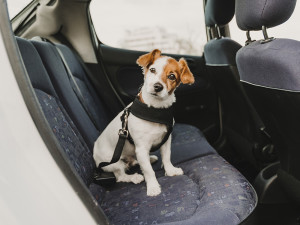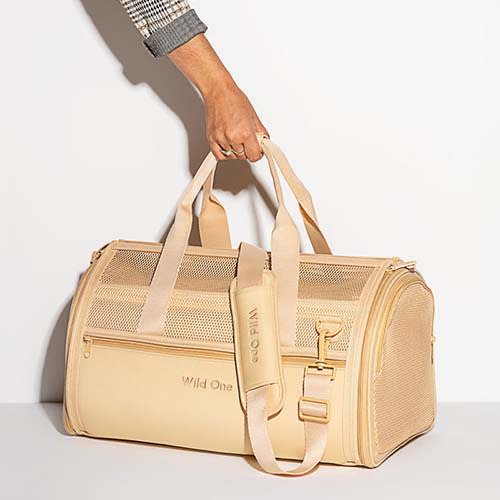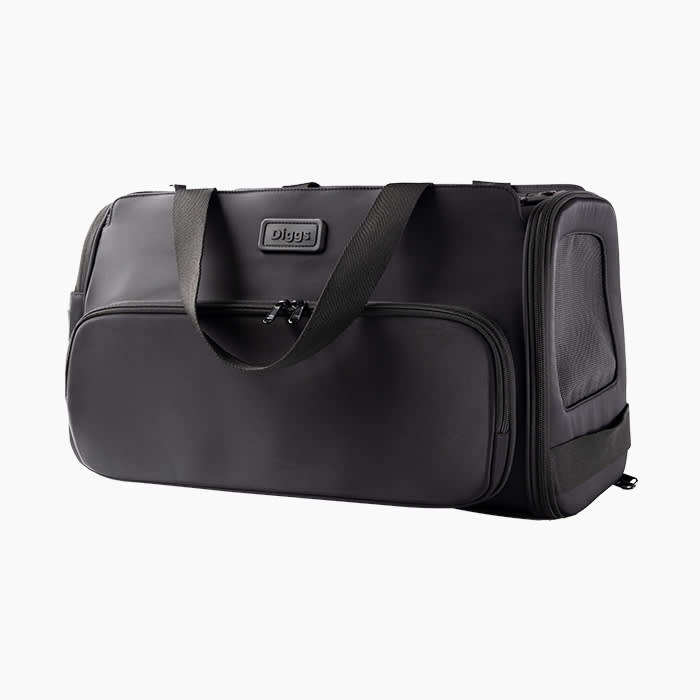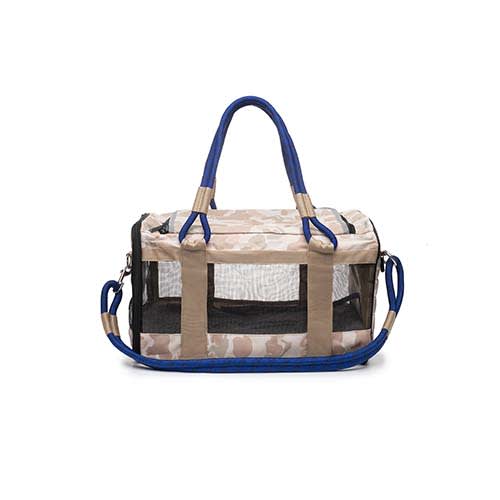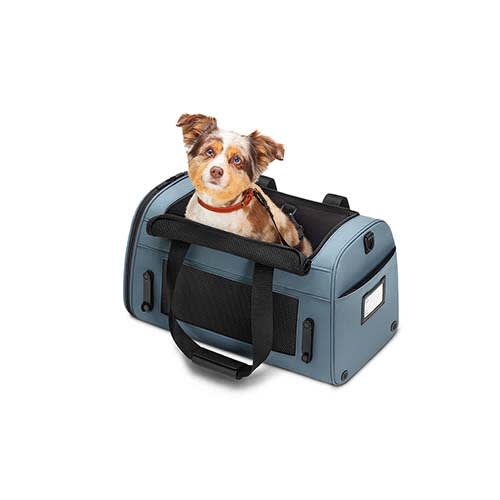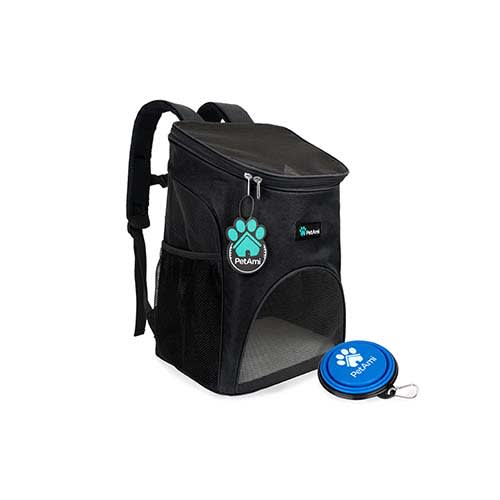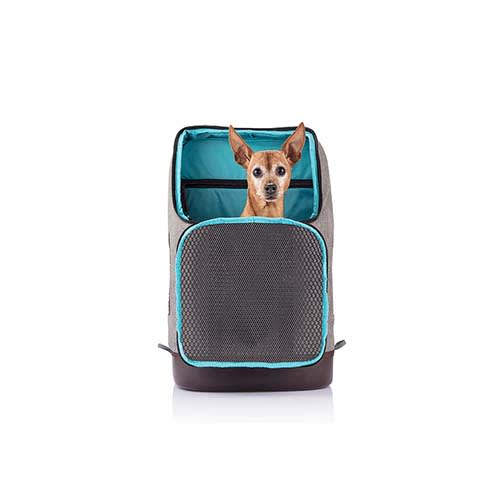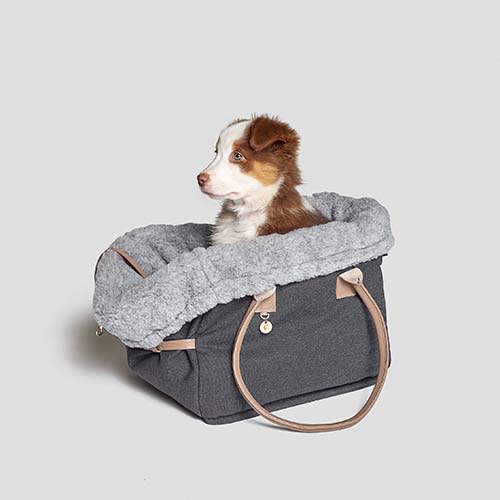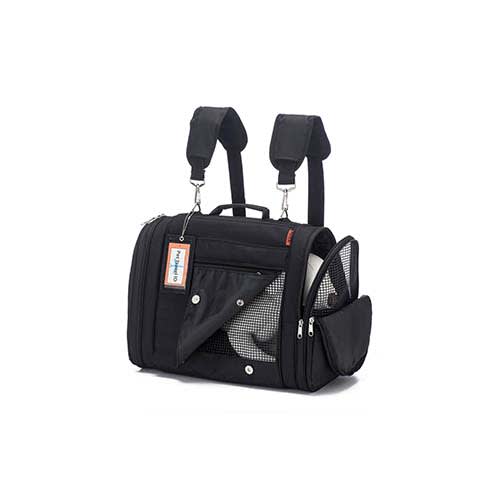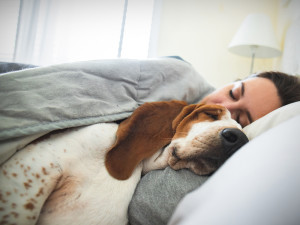The Best Dog Carriers For Planes, Trains and Automobiles
Whether you’re driving across the UK or flying internationally, your pup can comfortably tag along

Share Article
If a comedian tries a routine about the perils of air travel, they’re generally seen as a hack – and for good reason. The ever-evolving nuisance of the flight experience is well documented to the point that hearing someone reflect on it can feel exhausting and trite. That said, long security lines and inconsistent departure times may cloud us from one universal truth – travelling on the ground can be pretty tough, too. Add a furry companion to the mix and it’s a whole other level of stress.
But a good pet carrier can ease much of this anguish, allowing you to focus on the endless benefits of leaving your comfort zone, seeing new locations and smelling sea air. For guidance on which carrier is best for every dog, we asked an expert, Dr Elizabeth Shines. So whether your destination is a few miles or a few countries away, you can be prepared with the most effective seat for your copilot.
What to consider when travelling
When travelling with a dog, you should consider your mode of transport, first and foremost. “I think the main consideration is the main purpose of the carrier. Different carriers may be more suited to car travel than airline travel,” says Dr Shines. ”It’s possible one carrier could be suitable to all options, but some of that would be personal preference and style.”
Depending on your mode of transport, different factors should be prioritised for your pup’s comfort. According to Dr Shines, “When travelling by car, you might want to give your pooch a little more room to move around. You might also want a hard-sided carrier to provide more protection in the event of an accident. But would you want to bring a big, hard-sided carrier inside a small, fancy clothes shop? Probably not.”
Additionally, a pet’s personality and medical considerations should be taken into account. “A shy dog may like the privacy of a carrier without a lot of ‘windows’,” says Dr Shines. “A pup with a flat face who may be more sensitive to heat may do best in a well ventilated carrier (if going into a warm climate) instead of a handbag-type carrier that covers the body.”
How pet carriers help
Beyond avoiding the experience of chasing your runaway dog around an airport, there are plenty of benefits to using a pet carrier when travelling. If you’re driving, having them comfortably contained will minimise the potential for distraction, therefore making the ride safer. But if an accident were to happen, a good carrier also provides extra protection for the dog.
Dr Shines confirms that unrestrained pets are much more likely to get injured, and says that possibly the biggest plus of pet carriers is that many dogs love them. “Carriers can also be strapped into the back seat and this provides another layer of protection. Lastly, for some pets, it can help to decrease anxiety as well if the crate is viewed as a ‘safe space’ by the pet,” she explains.
The bottom line? There are few things more exciting and rewarding than travelling, and there’s no one we’d rather experience that with than our pups. Below, options for every adventure.
Btw, our editors (and their pets) picked out these products. They’re always in stock at the time we publish, but there’s a chance they’ll sell out. If you do buy through our links, we may earn a commission. (We’ve got a lot of toys to buy over here, you know?)
Best carriers for flights
Most airlines have strict rules for bringing dogs into the passenger cabin, if they allow it at all. You can find a full list of airlines that allow smaller dogs to travel with you in the cabin on the UK government websiteopens in new tab. For this reason, many carriers are created specifically for dogs who are joining their humans on a flight. Each of the following options is designed to keep your pup comfortable while in the skies.
However, it’s worth bearing in mind that longer trips may require additional care and consideration. “For instance, travel by air often includes long layovers in large airports where one might have to walk a mile or longer to get to a connection,” says Dr Shines. “For this reason, a carrier with wheels that can be pulled rather than carried may be preferable than one to carry.”
Best carriers for car rides
Travelling by car will award the most freedom in terms of size and material, though you can still help keep your dog extra comfy. These carriers are spacious and cosy while being easy to strap in and contain within a car seat.
Best carriers for adventuring
To our ramblers and backpackers, these options are for you. Each offers the chance to strap your pup to your back or side for adventuring by foot. Dr Shines sees these as mostly positive. “Backpack styles are convenient because it frees up the hands and arms. These are a great style if the weight of the pet is fine for the human’s back and shoulders,” she says. “These styles often can allow the pet’s head to be out of the carrier for more freedom, which they might enjoy. Plus, some of them look pretty cool.”
However, she does caution against using these for older dogs or ones with certain pre-existing conditions. “Due to the lack of structure, these may not be a great option for pets who have arthritis or other musculoskeletal issues. They can’t stand or move around as easily so this might make them stiff or stuck in an uncomfortable position,” she explains.
Best carriers for the daily commute
Maybe you bring your dog to work with you or maybe you want to start. Either way, these are the best options. They can be held in hand or over the shoulder, making each suitable for short walks or bus and train rides to the office. This can be pretty handy according to Dr Shines. “Carriers that are carried in hand are convenient because they can be put down as needed,” she says. “They will fully contain your pet, provided they are appropriately zipped/snapped. They also create a barrier between the pet and other pets/people. This means no well intentioned pets or people will be reaching out to touch the pet (which the pet may not appreciate).”
However, there is one potential drawback: “The downsides of these carriers are they tie up the hands from other tasks. The carriers can also become heavy on the arms.” So if you have your coffee, be prepared to juggle – and maybe double up on the dumbbell curls.

Sean Zucker
Sean Zucker is a writer whose work has been featured in Points In Case, The Daily Drunk, Posty, and WellWell. He has an adopted Pit Bull named Banshee whose work has been featured on the kitchen floor and whose behavioral issues rival his own.
Related articles
![Shepherd dog playing with yellow ball at the beach]()
How to Keep Your Dog Safe At the Beach
Five tips to help your pup have fun in the sun – safely
![Uni The Teacup Poodle happily sitting in the Signature Carry All Tote by Maxbone under a tarp outside]()
Your Commute Is About to Get Infinitely Cuter With These Dog City Carriers
The perfect tote for carrying your phone, keys, wallet – and dog – around town
![Dog seat-belted in a car]()
The Best Car Travel Gear for Dogs
All the essentials you need to hit the road with your copilot, from pet seatbelts to dog goggles
![Woman and dog sleeping together in bed]()
Where Should Your Dog Sleep At Night-Time?
It’s a personal preference, but here are the pros and cons

